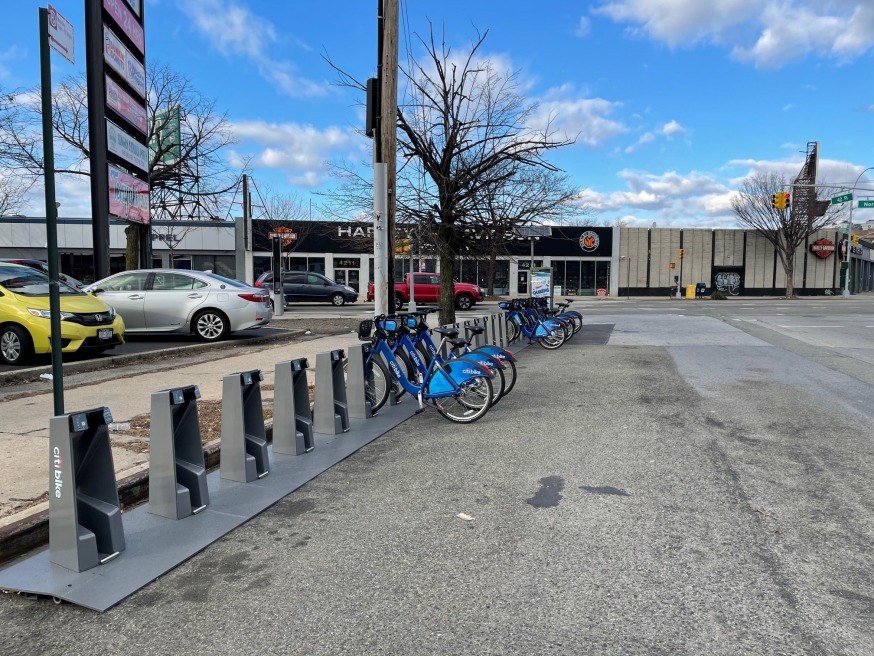
A Citi Bike station that was installed on the roadway at the corner of Northern Boulevard and 43rd Street in January 2021 (Photo: Queens Post)
Feb. 2, 2022 By Christian Murray
Citi Bike stations will start being installed in Sunnyside and Woodside in early May, according to the DOT.
The DOT released a draft plan yesterday and said that 71 stations will be installed in the Sunnyside and Woodside district, with the majority being stations located on the roadway.
Each station is likely to have approximately 20 bike docks, although the stations near transit locations are likely to be bigger.
A DOT representative presented the plan at Community Board 2’s Transportation Committee Tuesday night and said the agency was amenable to change station locations.
“These are not a done deal, per se,” said Lisa Morasco, a senior planner with the DOT. Furthermore, she said, the stations are modular—as opposed to being hardwired into the ground– so they can be easily moved.
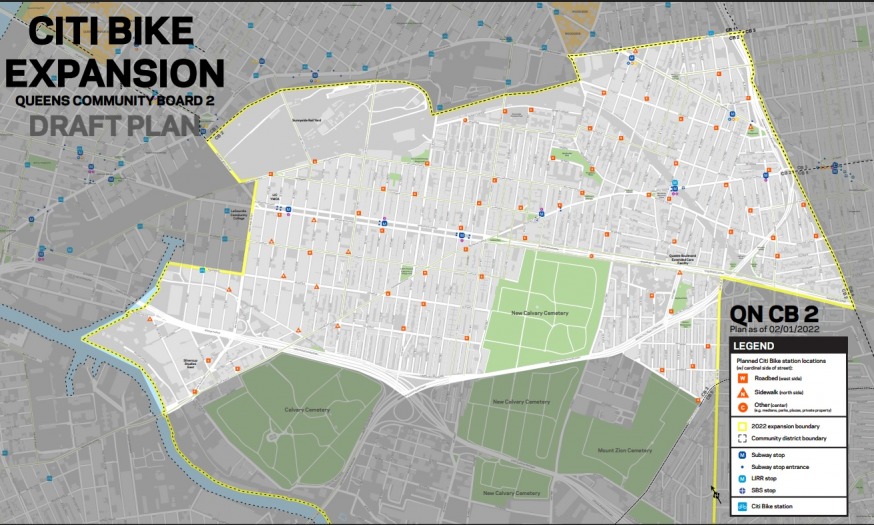
The draft plan of Citi Bike’s expansion into Sunnyside and Woodside (DOT)
The demand for Citi Bike is high, according to Morasco.
“We have over 160,000 annual numbers and we had over 100 million unique riders in 2021 making it really clear that Citi Bike is a mode of transportation that New Yorkers use and want,” Morasco said.
The DOT’s role with Citi Bike, she said, is to select sites and conduct outreach, with Lyft being in charge of the day-to-day maintenance of the service.
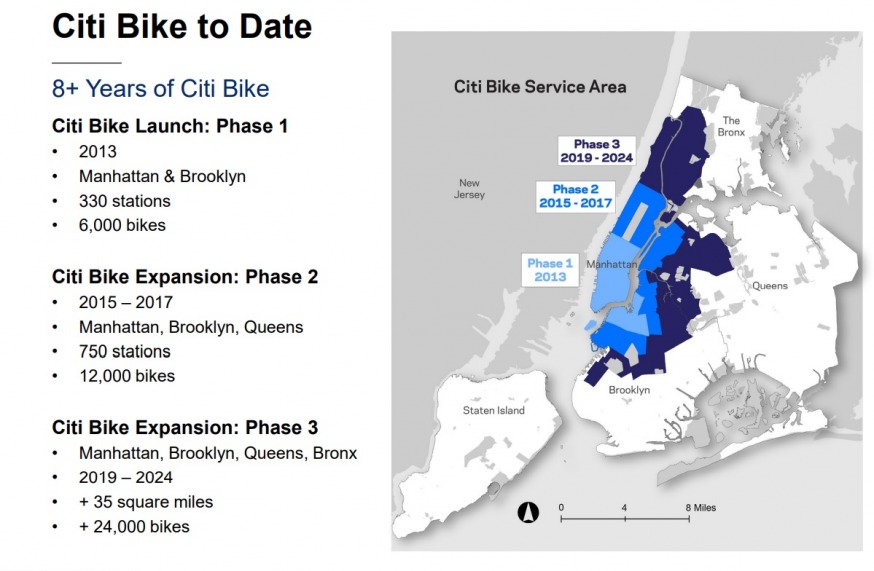
Source: DOT
The expansion into Sunnyside and Woodside is part of the DOT’s plan to build out the bike-sharing network across New York City that began in 2013 with Phase 1 of its installation process.
Citi Bike first came to Queens in 2015 under Phase 2 with docking stations in Long Island City. The network was then extended into Astoria and the far reaches of Long Island City in 2017. It was extended once again into northwest Astoria and East Elmhurst at the beginning for 2021.
The Sunnyside/Wooodside stations are part of Phase 3 that will later extend into Maspeth, Elmhurst, Jackson Heights, and Corona– as well as deeper into the other boroughs.
Morasco said the Sunnyside and Woodside locations were selected based on outreach conducted by DOT’s ambassador team as well as responses it had received from an interactive portal it had on its website.
The portal provided residents with the ability to recommend suitable locations—or state where they didn’t make sense. In total, 764 comments were submitted through the site.
The DOT, Morasco said, also aims to have a station every few blocks within a coverage district. The idea is to have a station within a 3-to-5-minute walk from one another.
Morasco did not say how many parking spaces would be lost as a result of the stations.
“That’s something we don’t generally calculate [at this stage].”
She did, however, say that the number of stations that will be on the roadway is an indicator of how many spaces will be eliminated. Most of the sites are planned to go on the roadway.

Citi Bike’s expansion into Sunnyside and Woodside. This map provides station locations in northern Sunnyside. The boxes indicate sites planned to be on the roadway (N=north). The triangles are stations planned to be on sidewalks (W=west) (DOT)
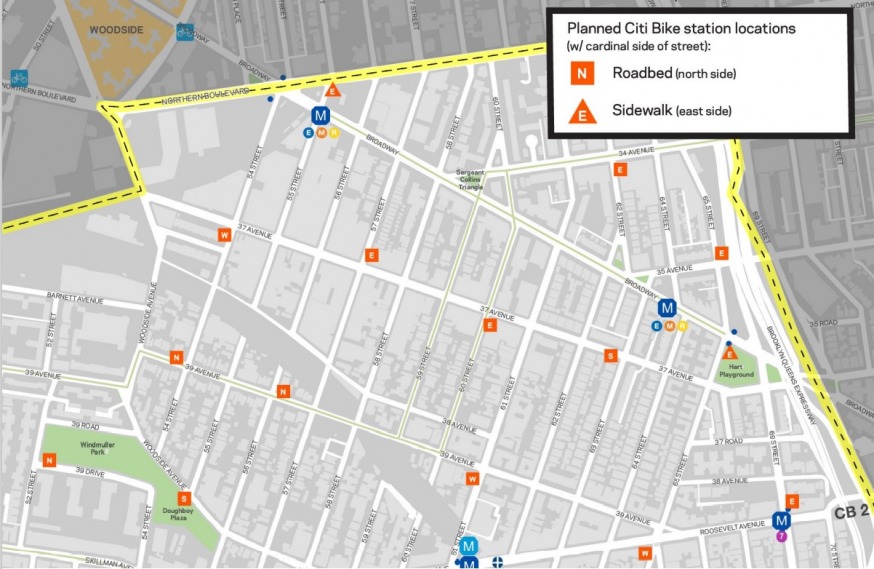
Citi Bike’s expansion into Sunnyside and Woodside. This map provides station locations in northern Woodside. The boxes indicate stations planned to go on the roadway, while triangles are stations planned to go on the sidewalk (DOT)

Citi Bike’s expansion into Sunnyside and Woodside. This map provides station locations in Woodside (DOT) The boxes indicate stations planned to go on the roadway, while triangles are stations planned to go on the sidewalk (DOT)
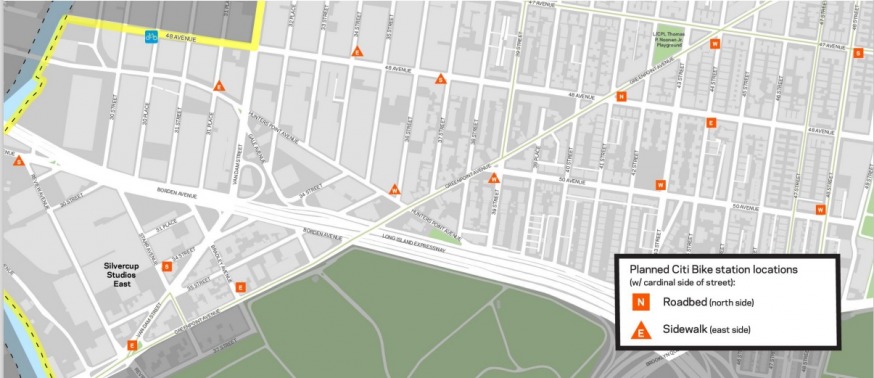
Citi Bike’s expansion into Sunnyside and Woodside. This map provides station locations in the southern portion of Sunnyside and Woodside (DOT). The boxes indicate stations planned to go on the roadway, while triangles are stations planned to go on the sidewalk (DOT)
